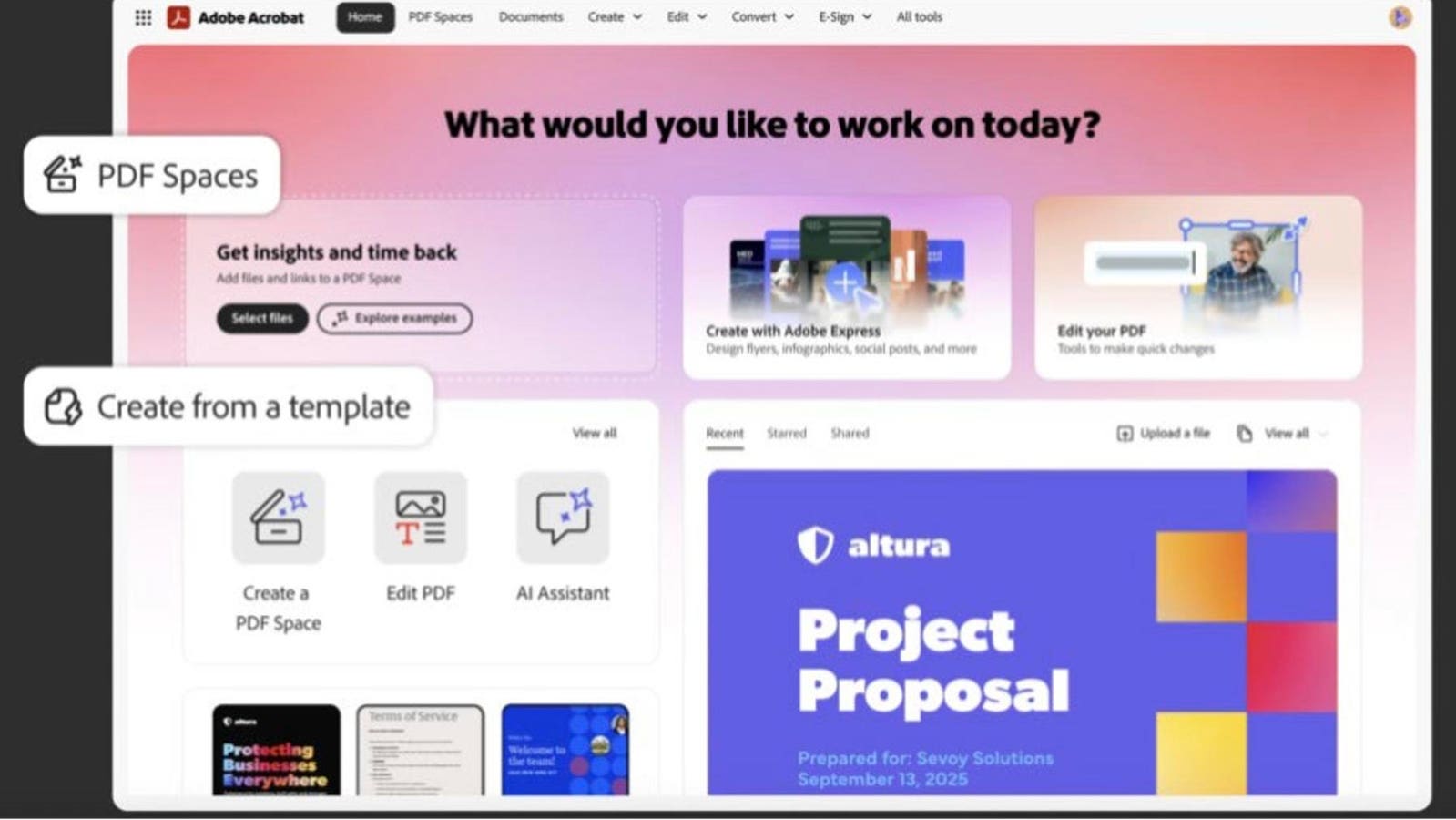The best way to future-proof your business is to embrace AI and build adaptable teams.
getty
Business in the United States is being completely overhauled as artificial intelligence upends nearly every industry.
Whether you’re exploring new ways to scale your company or reshaping your workforce, business leaders must weigh the costs — known and unknown — with potential gains, which are hardly guaranteed.
“For managers, AI agents mean less time spent overseeing basic training and more time to focus on higher-value tasks,” writes Forbes contributor Aytekin Tank, CEO of the San Francisco-based startup Jotform. “The key is smart delegation: Entrepreneurs and managers should use AI agents to handle designated training tasks, while maintaining strategic direction. Businesses that move quickly to integrate AI-driven learning will reap a major competitive advantage.”
Here’s how our expert contributors suggest you do it.
AI Is Not A Cure-Al — Use Tools Strategically
Writing and editing text may be the most popular use case for AI tools today. According to a McKinsey & Company survey from late 2024, more than 63% of executives said their companies are using generative AI to write text, relying more on chatbots.
The trouble is, employees often say that AI tools can make teams less productive, Forbes contributor Tor Constantino reports. He cites research highlighting “the shockingly wide divide between the expected productivity gains by senior executives and the lackluster results shared by the overwhelming majority of rank-and-file employees.”
In fact, University of Chicago professor Anders Humlum and University of Copenhagen professor Emilie Vestergaard published a study in 2025 that found “AI chatbots have had no significant impact on earnings or recorded hours in any occupation.” The modest productivity gains were offset by disengaged workers who felt they lost both growth potential and agency.
Reece Akhtar, Forbes contributor and CEO of the talent-management tools company Deeper Signals, recommends offering AI initiatives as an avenue for teams to experiment rather than merely scale operations.
“The extent to which we can use AI to augment the curious, driven and collaborative tendencies of our teams, the more optimistic we can be about their ability to develop new, unimagined innovations that open new streams of revenue,” Aktar writes.
Otherwise, executives may expect more from employees without considering that new tech tools require training to use well, and troubleshooting to maintain. Plus, automated production routinely requires human intervention to protect quality. If executives merely expect teams to churn out more work — seeing AI tools and services as a way to reduce headcount — the result may be additional work and lower morale.
“Workers report spending more time reviewing AI-generated content and learning tool complexities than the time these tools supposedly save,” writes Forbes contributor Luis Romero, the founder of GenStorm AI.
If maintaining positive team dynamics isn’t part of the foundation of your company’s business strategy, then adopting AI tools is unlikely to increase productivity — and could lead to a worker exodus.
When employees start using AI tools creatively to achieve high quality outcomes, that is a sign that the company is achieving a healthy level of AI adoption that can evolve along with the emerging technology.
Getty
How To Measure AI Adoption
As talent leaves, cyclical recruiting costs increase. Mounting tech support responsibilities without pay raises, team-building and growth opportunities can lead employees to disengage. To keep staff connected, executives must protect face-to-face time with coworkers, if only via remote video calls.
“What draws people in now isn’t just communication. It’s the sense that someone notices effort before asking for output,” writes Forbes contributor Vibhas Ratanjee, a Gallup researcher who specializes in leadership development. “Most internal tools are built to save time. Fewer steps. Smoother clicks. But frictionless doesn’t always mean thoughtful. When we remove human pauses, we risk removing the parts that build connection.”
Prolonged human-machine interaction creates mental fatigue, which can be eased with team-building and collaborative projects. When motivated teams use AI tools, that’s when the magic happens.
Forbes contributor Anne Griffin, an AI product consultant, writes that executives should measure a team’s AI adoption by focusing on speed and value created without compromising quality. Most teams could move faster, but quality suffers. That’s not the goal. Instead, Griffin recommends evaluating whether employees are demonstrating more agency in how they use AI tools.
When employees start using AI tools creatively, rather than merely prescriptively, that’s the type of AI adoption that can evolve along with the emerging technology.
Once sustainable AI adoption has become a central pillar of your company’s business strategy, that’s when you should start hiring AI experts.
Skills-based hiring and internship programs can help companies identify new, AI-savvy talent.
Getty
How To Hire The Best AI Experts
Hiring for any role is an opportunity to diversify and level-up your team.
“Check that your job ads reach a broad range of potential candidates. Use gender-neutral job descriptions to increase the number of women applicants,” writes Forbes contributor Corinne Post. “Involve technical women in the interview process: female job candidates who interview with female role models are more likely to accept job offers.”
That advice doesn’t only apply to technical roles. Forbes contributor Dr. Aviva Legatt, the founder of EdGenerative consultancy, which focuses on AI in education, recommends that employers should look beyond computer science majors and focus on “cross-disciplinary connections.” AI learning is not restricted to the IT department or engineering team, it will be a part of every department at the company.
Recruit interns and entry-level employees from universities that have robust AI education programs, like the University of Georgia and Emory University, in addition to Ivy League schools like Princeton. “Rather than limiting AI development to computer science or IT departments, Emory has deliberately fostered cross-disciplinary connections,” writes Legatt.
Skills-based hiring can help identify needed know-how on resumes, cover letters and LinkedIn profiles, regardless of the candidates’ degrees.Candidates from all backgrounds can prove their skills on tests you can administer during the interview process.
With regards to Gen Z candidates, Forbes contributor Sarah Hernholm, a SXSW EDU Student Startup Competition coordinator, also recommends considering candidates with communications degrees if they have social media skills, and graduates with degrees in human-computer interaction or cognitive science.
“Cognitive science sits at the intersection of psychology, neuroscience, computer science, and philosophy,” Hernholm writes. “This interdisciplinary approach creates graduates who understand how both human and artificial minds process information—a crucial skill as AI systems become more sophisticated.”
Next, send employees to network in person at conferences like World Summit AI Americas, the AI World Congress, the AI and Big Data Expo, and Ai4. Attendees might consider asking speakers and experts to introduce them to professionals they recommend.
Spread word of new job opportunities far and wide. When your team members post on social media about company job openings, the listing can reach a broader audience. Be open to candidates who may not have traditional qualifications but have the skills and experience to adapt to dynamic work environments. When interviewing candidates, consider with whom those candidates might collaborate.
How To Upskill Your Team
In addition to hiring AI-savvy talent, your business should create strategies for existing teams to experiment with AI tools. Investing in upskilling employees can be more cost-effective than trying to immediately automate numerous roles.
Forbes contributor Barry Libert, CEO of the platform advisory firm AllMatters, writes: “A workforce familiar with the company’s data and systems can more effectively integrate AI solutions into existing processes, reducing the time to implementation and ensuring smoother transitions.”
Companies frequently save money when they train and inspire current staff to adopt emerging trends like AI rather than relying solely on new employees.
“Effective training develops skills during the training rather than relying on participants to revisit material independently afterward,” writes Forbes contributor Cynthia Pong. “When employees see immediate applications for their new skills, they’re far more likely to incorporate AI into their daily work how you want them to.”
AI tools are not just for technical teams. Every team can explore how AI tools might be useful for different projects.
Getty
AI Tools You Can Start Using Today
AI tools are not just for technical teams. Forbes contributor Christian Stradler, a professor of strategic management at Warwick Business School, recommends that operations personnel try AI tools like LawGeex, Kira Systems or Luminance AI for simple, standard contracts.
Marketing teams can try tools like the video editing tool Opus Clip, the text-to-video generator Runway or the image editing tool Pixlr — whatever suits the task at hand.
The most AI-proof companies with growth potential will strategize how to go beyond AI automation and specific tools. Creating an AI-savvy company is all about how teams adapt and evolve along with the technology.
“Winning organizations aren’t just updating their tech infrastructure. They’re preparing their people with training and clear guidelines,” writes Forbes contributor Sarah Elk, a senior partner focused on AI solutions at Bain & Company. “Companies that hesitate now risk being left behind—not just by their competitors, but by their own employees.”
What’s propelled your business to this point won’t necessarily guarantee your future success. Balancing bold investments and regular improvements can help prepare you for whatever AI may bring.








